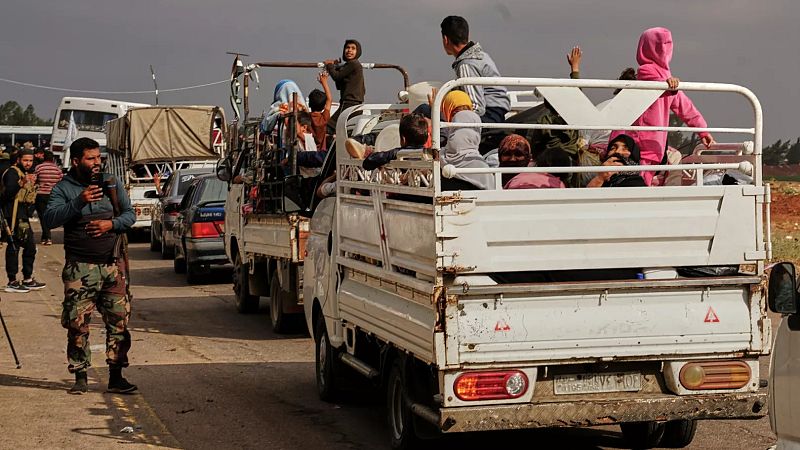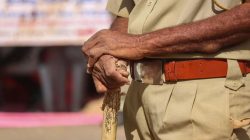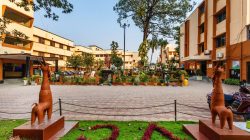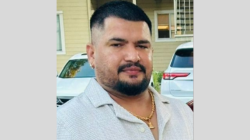Escalation and Evacuation in Suwayda
The Syrian government has initiated the evacuation of Bedouin families from the city of Suwayda, marking a significant development in the ongoing conflict between the Druze minority and Bedouin fighters. The fragile ceasefire that has held for the past week is now being tested as tensions remain high. This situation has raised concerns about the stability of Syria’s postwar transition, which is already under immense pressure.
The violence between the Druze militia and Sunni Muslim clans has resulted in numerous casualties, with hundreds losing their lives. This unrest threatens to destabilize the country further, as it has led to targeted attacks against the Druze community and subsequent revenge attacks against the Bedouins. These cycles of violence have created a climate of fear and uncertainty among the local population.
According to the UN International Organisation for Migration (IOM), over 128,571 people have been displaced due to the hostilities that began with a series of attacks a week ago. The scale of displacement highlights the severity of the crisis and the urgent need for humanitarian assistance.
In addition to the internal conflicts, Israel has launched multiple air strikes on the Druze-majority Suwayda province, targeting government forces that have been perceived as supporting the Bedouins. This external involvement adds another layer of complexity to an already volatile situation.
Evacuation Efforts and Security Measures
Syrian state media reported on Sunday that the government had coordinated with local officials in Suwayda to bring in buses to evacuate approximately 1,500 Bedouins from the city. The Syrian interim Interior Minister, Ahmad al-Dalati, emphasized that this initiative would also allow displaced civilians from Suwayda to return, as the fighting has largely ceased and efforts for a comprehensive ceasefire continue.
Al-Dalati stated that a security cordon has been imposed around Suwayda to ensure its safety and prevent further conflict. He added that this measure aims to preserve the path toward reconciliation and stability in the province.
Buses filled with Bedouin families were accompanied by Syrian Arab Red Crescent vehicles and ambulances. Some families left the city on trucks carrying their belongings. However, the Syrian authorities did not provide detailed information about the evacuation process or how it aligns with the broader agreement. This lack of transparency has raised questions about the effectiveness of the measures taken.
Negotiations and International Involvement
The UK-based war monitor, the Syrian Observatory for Human Rights, reported that part of the agreement involves Bedouin fighters releasing Druze women they were holding captive and leaving the province. This condition underscores the delicate nature of the negotiations and the need for mutual trust between the conflicting parties.
US Special Envoy to Syria, Tom Barrack, who has been involved in various negotiations, emphasized the importance of holding perpetrators of hostilities accountable. He also stressed the need for an agreement that allows Syria’s seven-month-old interim government to function effectively after over a decade of conflict.
Barrack expressed his concern about the situation, stating, “What’s happened is horrible. It’s unthinkable.” He called for accountability while also recognizing the responsibility of Syrian authorities to restore order.
Tensions and Uncertainty
Bedouin fighters had withdrawn from Suwayda city on Sunday, standing on the outskirts while security forces cordoned off the area. An aid convoy of 32 Red Crescent vehicles entered the city, but a government delegation with another aid convoy was turned away. This discrepancy in access to aid raises concerns about the fairness and effectiveness of relief efforts.
Following the failure of talks for a hostage swap deal on Saturday, reports emerged of Israeli air strikes and helicopters over villages where skirmishes occurred between the Bedouins and the Druze. However, the Israeli military denied any knowledge of such strikes.
Druze Community’s Concerns
The Druze community in Syria has become increasingly uncertain about the new government. Syria’s interim President, Ahmad al-Sharaa, has attempted to appeal to the Druze while criticizing factions loyal to spiritual leader Sheikh Hikmat al-Hijri, who have been involved in the clashes. Al-Sharaa promised to hold accountable those responsible for targeted attacks and other violations.
While the Druze community celebrated the downfall of the al-Assad family, they remain cautious about al-Sharaa’s leadership, especially given concerns about potential Islamist rule. Many Druze prefer a diplomatic approach to address their concerns.
However, al-Hijri and his supporters have taken a more confrontational stance with al-Sharaa, unlike most other influential Druze figures. The numerous attacks, including the killing of Druze civilians and the desecration of religious symbols, have made the Druze more skeptical of al-Sharaa and less optimistic about achieving peaceful coexistence.
More than half of the roughly 1 million Druze worldwide live in Syria. The remaining Druze are primarily found in Lebanon and Israel, including in the occupied Golan Heights, which Israel captured from Syria in the 1967 Mideast War and annexed in 1981.







